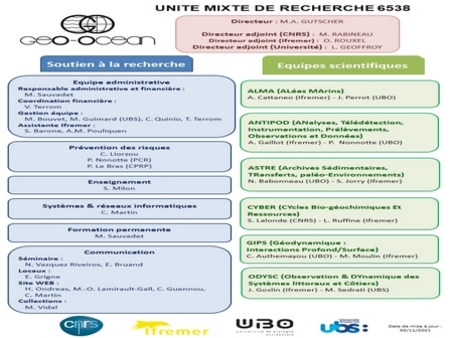GEOTRACES
Trace metals are in the middle of environmental concerns.
Some are contaminants and toxic for the environment (e.g. mercury), other control a part of the phytoplankton production (e.g. iron, copper, zinc), with effects on primary production and more generally on carbon transfer to the deep ocean. These trace elements are now considered as nutritive elements, like nitrogen, phosphorus or silica.
It is crucial to characterize their distribution in all compartments defined by operational means – colloidal, dissolve and particulate – to tend to a deep and detailed comprehension of the several exchange mechanisms between these phases, a sine qua non condition to enhance climate change simulations.
In red: Planned Sections. In yellow: Completed Sections. In black: Sections completed as GEOTRACES contribution to the IPY.
In this context, the international program GEOTRACES, launched in 2008, ambitions to fill these gaps at an unprecedented scale. Scientists from 35 countries are participating at this program which is designed to study all major ocean basins over the next decade, with dedicated oceanographic campaigns. In particular, the GEOTRACES program objectives, where France is strongly involved, are:
- identifying processes and quantifying flux that control the trace elements distribution and their isotopes in the ocean,
- establishing the sensibility of these distributions to changing environmental conditions.
To sample these trace elements and their isotopes, it is necessary to apply ultraclean conditions, from the sampling until the analysis of the samples. The French community was recently equipped with ‘ultraclean’ Kevlar cable, winch and rosette.







